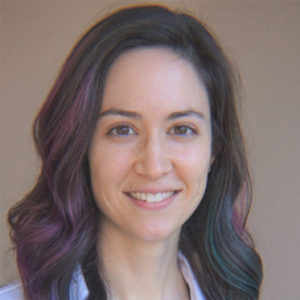
You’ve probably heard the term myopia before. But what exactly does myopia mean? Is it a disease? How should I cure or treat myopia? If I wear glasses, will it make my myopia even worse? This article covers everything you need to know about what it means to have myopia.
THE CLASSIC DEFINITION OF MYOPIA
Before you can defeat your enemy, you need to know exactly what it is. Myopia is a disease of the eye that is usually the result of an eyeball that has grown too long. We call how long the eyeball is the ‘axial length’. When the axial length grows excessively long, your vision will suffer in direct correlation. So any treatment we discuss has to show efficacy in its ability to reduce axial length elongation compared to a control group. Other times, the cornea Classically defined myopia is a vision condition where you will see objects up close much more clearly than objects you see far away. Another word to describe myopia is nearsightedness and these words are used interchangeably at times. Myopia happens when the eyeball is too long or if the front part of the eye called the cornea is too steep. The majority of the time, however, myopia occurs because the eyeball size, or the axial length, is too large. When this happens, a clear image doesn’t land far enough back onto the back of the eye called the retina.
Recent research shows that myopia affects more than 42% of the United States population. This number has been increasing every year at epidemic levels worldwide as we expect half of the world to have myopia by 2050. While many scientists initially believed that genetics were the primary cause for developing myopia, we now know that the environment in which we grow up can tremendously impact the level of myopia we have as adults. Increased digital device usage, lack of outdoor activity, and too much near work have been associated with developing high levels of myopia.
THE DANGERS OF HAVING MYOPIA
There are different types of myopia as well. If a child develops myopia at a young age, we know that they are at higher risk to develop high myopia and even pathological levels of myopia. High levels of myopia can lead to an increased risk for diseases of the eye such as retinal detachments, glaucoma, and myopic maculopathy. Unfortunately, those diseases can all lead to permanent vision loss. These life-altering diseases are another layer of danger besides the obvious need for optical correction in glasses or contact lenses in order to see clearly.
When you have pathological or degenerative myopia, other signs can form on your eyes that your eye doctor needs to monitor over time. Lattice degeneration and lacquer cracks of the retina all show signs that the retina is under duress because the eyeball has grown excessively long. Ask your doctor about these signs and other ones such as a tilted optic nerve head disc and choroidal neovascularization that happen exponentially higher in cases of extremely high levels of myopia.
WHAT ARE THE BEST WAYS TO TREAT MYOPIA?
The best treatment is to first prevent myopia if possible. More research is being conducted in this area, but as a general rule, eye doctors are encouraging at least two hours of outdoor activity per day. More outdoor activities under natural sunlight have been associated with a lower risk of developing myopia in the first place. If your children have to do intense studying or reading, it is recommended to do as much reading as possible when the sun has set versus reading during the day.
Regular checkups with your eye doctor to diagnose myopia as early as possible is also critical. By catching myopia at an early age, there can be many different types of interventions to prevent myopia from worsening. Myopia typically begins in school-aged children and can worsen until the leveling out usually in your mid-twenties.
As far as the visual component is concerned, usually, a pair of glasses or contact lenses are sufficient. Once the eyes have stopped growing, refractive surgery procedures can be employed as well. But keep in mind that simply correcting your vision will not stop your eyes from getting worse. The root cause of myopia, an eyeball that continues to grow excessively long during our youth, needs to be addressed.
Special pharmaceutical agents such as atropine have been shown to slow down the progression of myopia considerably. Special contacts such as orthokeratology lenses worn at night are effective as well. Even soft contact lenses and glasses designed with special optics different from the traditional pair of glasses can be effective to slow down the rate of myopic progression.
MYOPIA ROUNDUP
More contact lenses are being designed and FDA approved to slow down myopic progression. The MiSight contact lens is an example that has been shown to slow down the rate of myopia by almost 60% compared to control Regardless of your age or background, it is important to get educated about myopia because it is a widespread disease of the eye. Seeing your eye doctor or chart a proper course of action to prevent or treat myopia is incumbent on every parent in this new digital age. It is not just the digital age as well, results coming from studies of children after the COVID year of 2020 give strong evidence that the environment that COVID induced with social distancing may be causing the largest spike in myopia amongst children we’ve ever seen. Myopia is now viewed as a disease worth treating.
TREEHOUSE EYES CAN HELP PREVENT MYOPIA PROGRESSION
The good news is we help prevent or slow down myopia progression in kids—just like yours—so they can have their best shot at academic and social success! Above are four of the best ways we treat myopic progression once your child has been diagnosed with myopia. Orthokeratology involves reshaping the eye gently with a contact lens while sleeping. Atropine involves an eye drop that can signal the eye to grow a little slower. Custom soft multifocal lenses are worn during the day. And even specially designed glasses are on the horizon to improve the progression of myopia.
The Treehouse Eyes eye doctors use state-of-the-art equipment to develop a personalized treatment plan for your child. Our non-invasive treatments include customized contact lenses and special prescription eye drops. Moreover, data shows that our patent-pending Treehouse Vision System® treatment plan can decrease myopia progression by 78%.
Give your child the tools they need to succeed! To schedule your child’s back-to-school eye exam, contact us to see a list of all providers near you visit Treehouse Eyes today.


 Dr. Kapadia originally hails from St. Catharines, Ontario, Canada where he earned his Bachelor of Arts degree from Brock University. He then went on to graduate with honors from the Michigan College of Optometry in 1998, where he specialized in contact lenses. After he graduated, Dr. Kapadia completed a one-year residency at the renowned Bascom Palmer Eye Institute in Miami, Florida, where he focused on ocular diseases.
Dr. Kapadia originally hails from St. Catharines, Ontario, Canada where he earned his Bachelor of Arts degree from Brock University. He then went on to graduate with honors from the Michigan College of Optometry in 1998, where he specialized in contact lenses. After he graduated, Dr. Kapadia completed a one-year residency at the renowned Bascom Palmer Eye Institute in Miami, Florida, where he focused on ocular diseases. Dr. Kapadia graduated with honors from the Michigan College of Optometry in 1999, where she received the Wesley-Jessen award for Outstanding Work in Contact Lenses. During her studies, she also served as President of Student Volunteer Optometric Services to Humanity (SVOSH), which works to improve the sight of millions of people in developing countries.
Dr. Kapadia graduated with honors from the Michigan College of Optometry in 1999, where she received the Wesley-Jessen award for Outstanding Work in Contact Lenses. During her studies, she also served as President of Student Volunteer Optometric Services to Humanity (SVOSH), which works to improve the sight of millions of people in developing countries. After growing up in Minersville, Pennsylvania, Dr. Price graduated from Susquehanna University in 2012 with a Bachelor’s Degree in Biology. Dr. Price continued her education at the Pennsylvania College of Optometry and completed her training in 2016. After graduation, Dr. Price spent her career studying advanced eye diseases and specialized Low Vision services and devices.
After growing up in Minersville, Pennsylvania, Dr. Price graduated from Susquehanna University in 2012 with a Bachelor’s Degree in Biology. Dr. Price continued her education at the Pennsylvania College of Optometry and completed her training in 2016. After graduation, Dr. Price spent her career studying advanced eye diseases and specialized Low Vision services and devices. Dr. Morgan Kickliter grew up in Hendersonville, Tennessee.
Dr. Morgan Kickliter grew up in Hendersonville, Tennessee. Dr. Phillips earned his Bachelor of Science in Chemistry at the University of Georgia before achieving his Doctor of Optometry from the Southern College of Optometry. There, he served as Vice President of the Georgia Optometric Student Association and provided free and cost-reduced optometric care to underserved patients in Mexico and Belize with the Student Volunteer Optometric Services to Humanity. He served his residency at Gainesville Eye Associates, focusing on ocular diseases.
Dr. Phillips earned his Bachelor of Science in Chemistry at the University of Georgia before achieving his Doctor of Optometry from the Southern College of Optometry. There, he served as Vice President of the Georgia Optometric Student Association and provided free and cost-reduced optometric care to underserved patients in Mexico and Belize with the Student Volunteer Optometric Services to Humanity. He served his residency at Gainesville Eye Associates, focusing on ocular diseases.